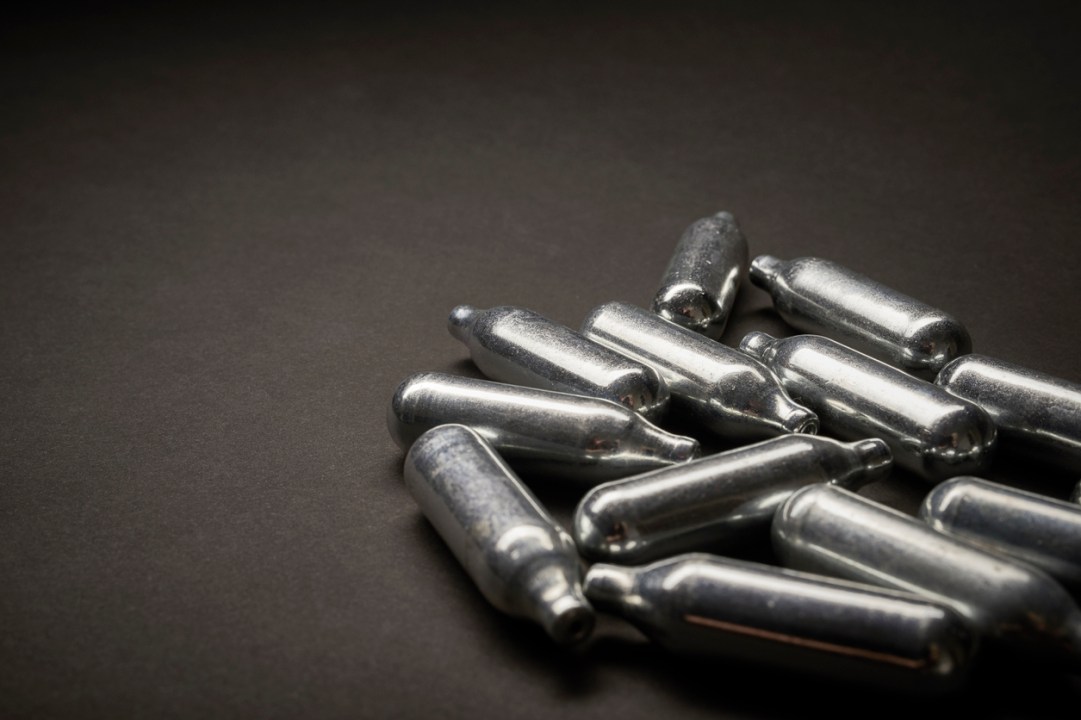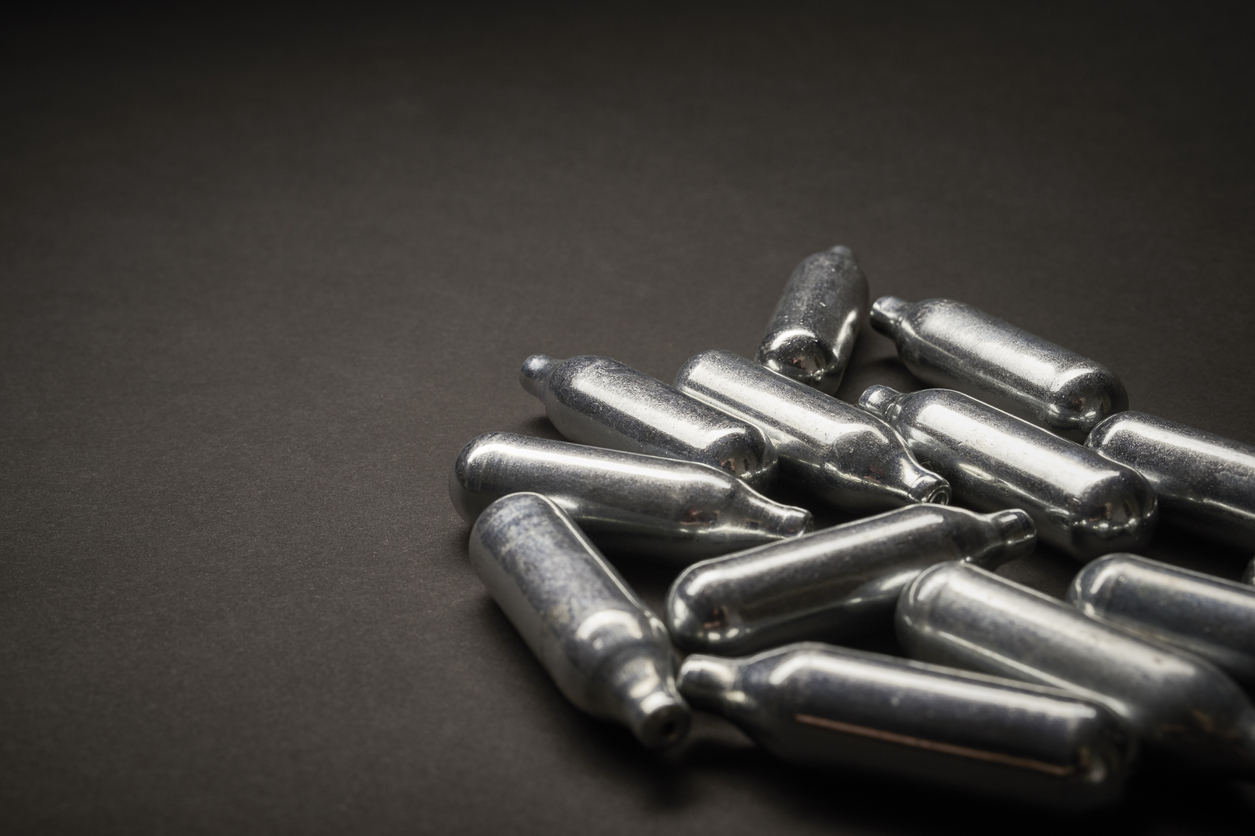In his memoir Spare, Prince Harry has revealed he ‘enhanced his calm’ during the birth of his son Archie in 2019 by taking ‘several slow, penetrating hits’ of the canister of laughing gas in his wife Meghan’s hospital room. He described how when a nurse returned and tried to give Meghan a dose for pain relief, there was none left: ‘I could see the thought slowly dawning. Gracious, the husband’s had it all. “Sorry,” I said meekly.’
He is far from alone in enjoying the high that comes from laughing gas. Also known as nitrous oxide, it has become the second most popular drug (behind cannabis) among 16- to 24-year-olds, according to data from the Office for National Statistics. An astonishing 3.5 tonnes of canisters were collected in the aftermath of last year’s Notting Hill Carnival – that’s around four skips full of what some dub ‘hippy crack’.
Euphoria, relaxation and dissociation from reality are some of the effects that have made it so popular. But doctors have warned it has a far less funny side, with an ‘epidemic’ of teens and young adults being hospitalised after inhaling the gas – and some ending up paralysed.
Burst lungs, nerve damage and seizures are other risks. Inhaling the gas can also cause a spasm of the throat which stops you breathing. You suffocate. Neurologists and toxicologists have reported a 257 per cent rise in serious poisonings in the past year, according to the National Poisons Information Service.
Nitrous oxide is a colourless gas which was discovered by an Englishman called Joseph Priestley in 1772. He described it as a ‘remarkable species of air’. It was popularised as an anaesthetic in medicine and an intoxicant at upper-class parties in the late Georgian era – and people have used it both medically and recreationally ever since.
It is a staple of commercial kitchens – used to whip cream – and in medicine due to its pain-relieving properties. But around ten years ago, it began really taking off as a party drug.
Doctors have warned of an ‘epidemic’ of teens and young adults being hospitalised after inhaling the gas – and some ending up paralysed
The gas is traditionally dispensed from 8g cartridges into balloons using a ‘cracker’ which makes a distinctive ‘tshh’ noise when the gas is released into the balloon. Breathe in, breathe out. Repeat. The dissociative high is short and sharp, lasting around 30 seconds. After that your feet are back on the ground.
Since 2016 it has been classed as a ‘psychoactive substance’ under the Psychoactive Substances Act 2016, which makes it illegal to supply for human consumption but legal to possess for personal use. Despite this, it’s still easily available to buy. The former Home Secretary Priti Patel pledged to ‘take tough action’ on nitrous oxide abusers in 2021, and considered criminalising personal possession.
It is estimated that around 700,000 people use laughing gas each year, according to a British Medical Journal report published in September. The latest data from an England and Wales Crime Survey from 2019/2020 reported that 9 per cent of 16- to 24-year-olds had taken it, up from 6 per cent in 2012/2013. But it is difficult to accurately quantify the rise in related hospital admissions because the UK data is generally poor. So it’s suspected that usage and associated hospitalisations far exceed the levels recorded.
Dr Nikos Evangelou, a neurologist at Nottingham University Hospital, told the Sun: ‘I’ve seen two young people completely paralysed and unable to walk because of nitrous oxide. I’m seeing five to six youngsters a week on average with some degree of damage. It’s tragic and terrifying.
‘Many of those with early symptoms – tingling hands and feet and unsteadiness – don’t seek help. They need to know this is the start of something incredibly serious, and they need to stop before permanent damage is done.’
It follows Dr David Nicholl, a consultant neurologist at Birmingham Hospitals NHS Trust, warning of ‘an epidemic of young people coming into hospital with spinal cord and nerve damage because of nitrous oxide abuse’. ‘It’s terrifying to see paralysed young people from laughing gas canisters,’ he said.
Between 2001 and 2020 there have been 56 deaths from nitrous oxide in England and Wales, with 45 of those occurring since 2010, according to the ONS. Despite these relatively low numbers a BMJ report stated that ‘doctors are concerned after seeing more users presenting neurological complications after inhaling from often large canisters of gas’.
This comes as bigger cylinders ranging from 0.58kg to 15kg have swept the recreational market, which has made the gas cheaper to use while promoting wider, more frequent and heavier use. And it’s this heavy use that is compounding the problem.
‘There is an increase in the number of people who use greater quantities of the gas more frequently and for longer periods of time. It is unclear what dose causes chronic toxicity, although the greater the amount used, the greater the risk,’ a 2022 report from the European Monitoring Centre for Drugs and Drug Addiction said.
So it’s important to be aware of the risks, raise awareness of the warning signs and encourage moderation if not cessation of use. Party balloons can have permanent and devastating consequences.







Comments